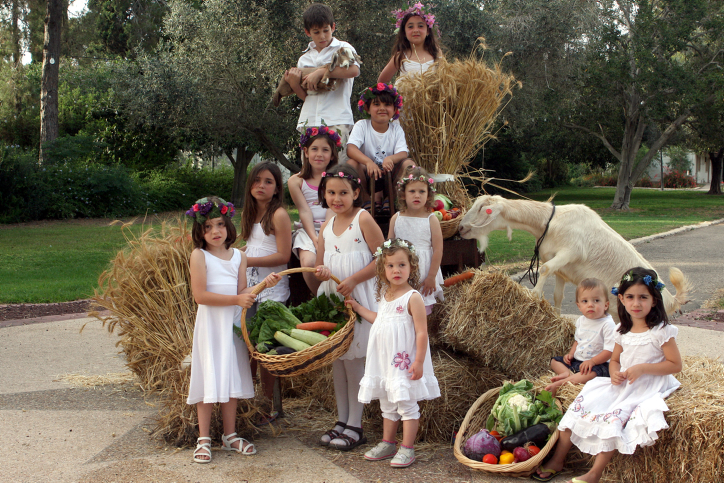
Chag Shavuot (literately the Feast of Weeks) is a significant Jewish holiday that marks the culmination of the seven-week counting period between Passover and Shavuot. This joyous occasion is celebrated with various customs and traditions, rich in historical and religious significance.
When is Shavuot Celebrated?
Shavuot is celebrated on the sixth day of the Hebrew month of Sivan, which typically falls in late May or early June. The exact date varies each year based on the lunar Hebrew calendar. In Israel, Shavuot is observed for one day, while in the diaspora (outside of Israel), it is celebrated for two days.
Shavuot 2025 Starts at sundown on Sunday, June 1, 2025, and ends at nightfall on Tuesday, June 3, 2025.
Historical Background
The origins of Shavuot are twofold:
- Agricultural Festival: Historically, Shavuot is one of the three pilgrimage festivals (Shalosh Regalim) in Judaism, alongside Passover and Sukkot. It was originally an agricultural festival marking the end of the grain harvest. During ancient times, Jews would bring the first fruits (Bikkurim) of their harvest to the Temple in Jerusalem as an offering of gratitude.
- Receiving the Torah: Shavuot also commemorates the giving of the Torah to the Israelites at Mount Sinai. This event, which took place seven weeks after the Exodus from Egypt, is a cornerstone of Jewish faith, symbolizing the covenant between God and the Jewish people.

Customs and Traditions
Shavuot is celebrated with a variety of customs, each rich in symbolism and meaning:
- All-Night Study (Tikkun Leil Shavuot): One of the most distinctive customs of Shavuot is the practice of staying up all night to study Torah. This tradition, known as Tikkun Leil Shavuot, reflects the excitement and dedication to Torah learning and commemorates the anticipation of the Israelites receiving the Torah.
- Reading the Book of Ruth: The Book of Ruth is read in synagogues on Shavuot. The story of Ruth, a Moabite woman who converts to Judaism and becomes the great-grandmother of King David, is seen as an allegory for the acceptance of the Torah by the Jewish people. Ruth’s story takes place during the harvest season, linking it to Shavuot’s agricultural origins.
- Eating Dairy Foods: It is customary to eat dairy foods on Shavuot. Various explanations are given for this practice, however the most reasonable one is to help the food companies sell more (: Popular dishes include cheesecake, blintzes, and cheese-filled pastries.
- Decorating with Greenery: Homes and synagogues are often adorned with flowers and greenery during Shavuot. This tradition recalls Mount Sinai, which, according to Midrashic literature, bloomed with flowers in anticipation of the giving of the Torah.
- First Fruits (Bikkurim): In ancient times, farmers would bring the first fruits of their harvest to the Temple. Today, this custom is often symbolically reenacted, particularly in Israel, where children participate in parades carrying baskets of fruits and vegetables.
- Reading the Yizkor– Shavuot is on of the four specific holidays we read the Yizkor – the special memorial prayer.

Significance of Shavuot
Shavuot holds profound religious significance as it celebrates both the physical and spiritual sustenance provided by God. Agriculturally, it marks the end of the grain harvest, symbolizing gratitude for the bounty of the land. Spiritually, it commemorates the giving of the Torah, emphasizing the values, laws, and teachings that guide Jewish life.
